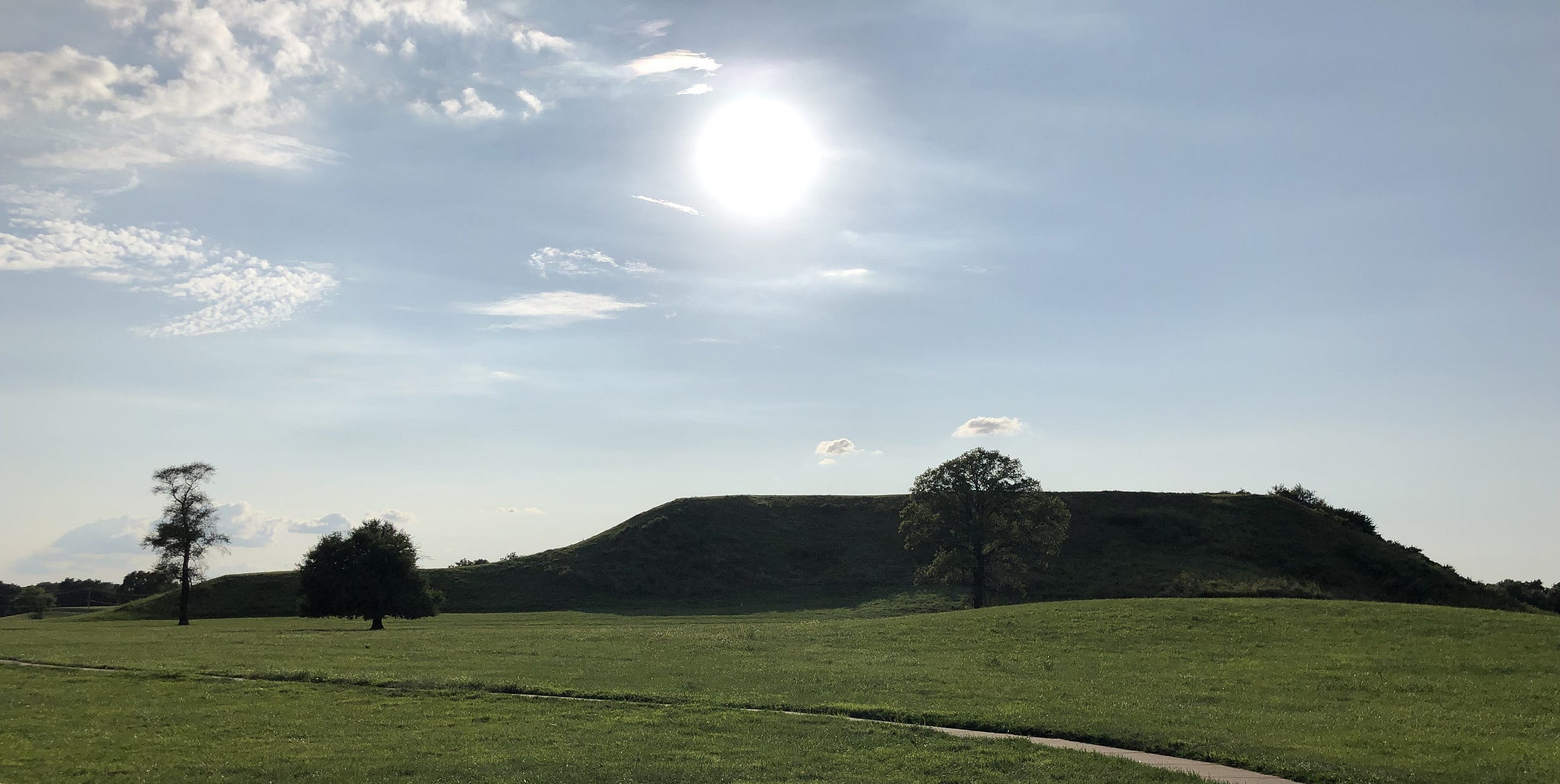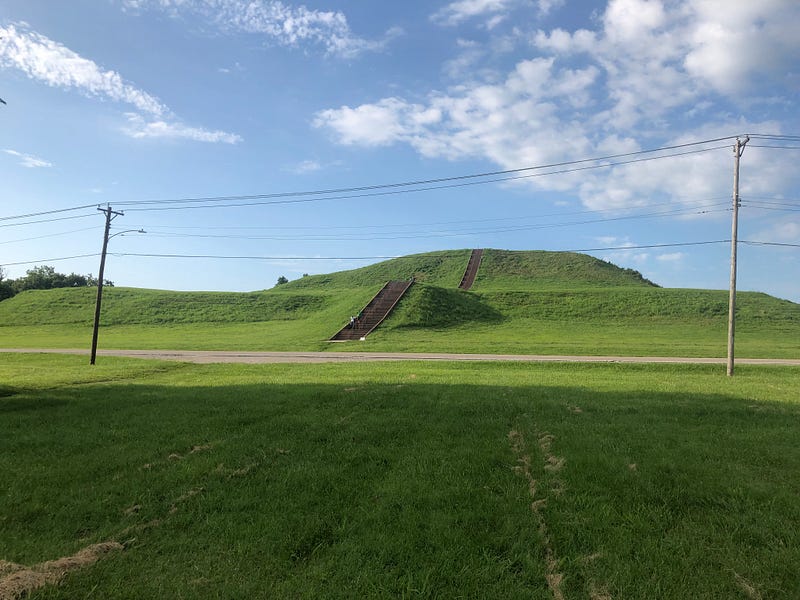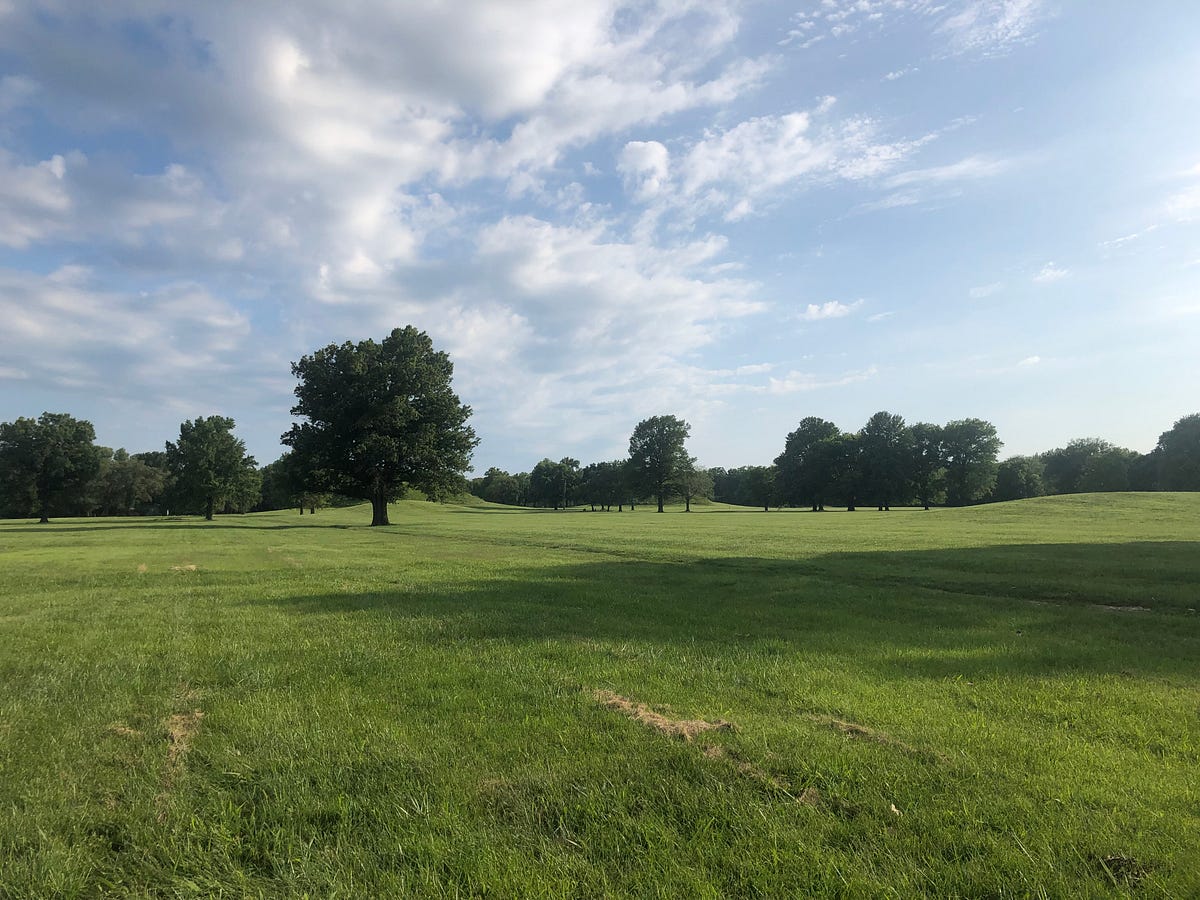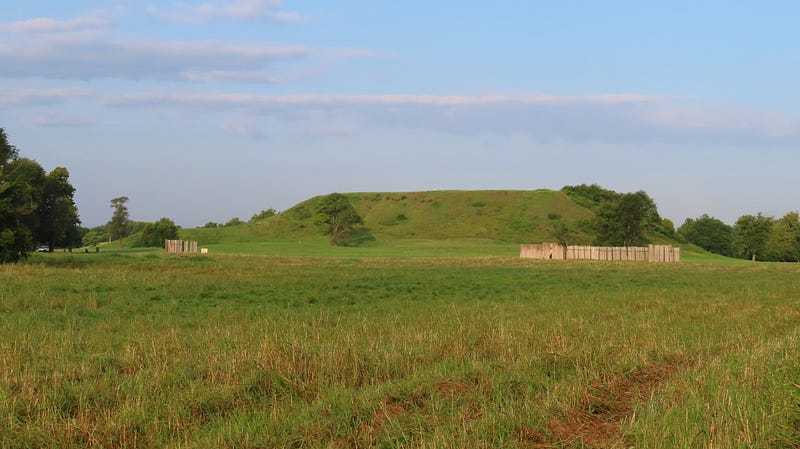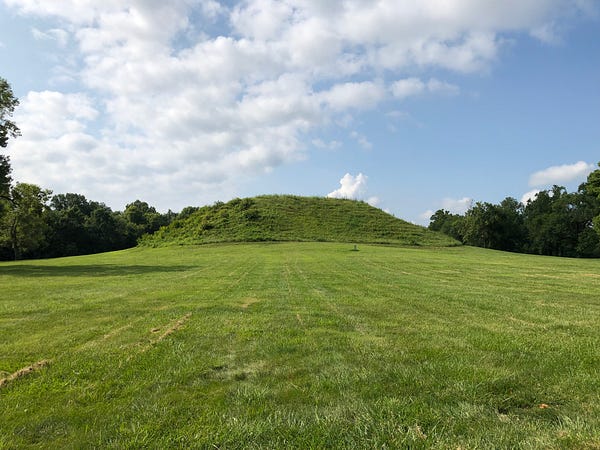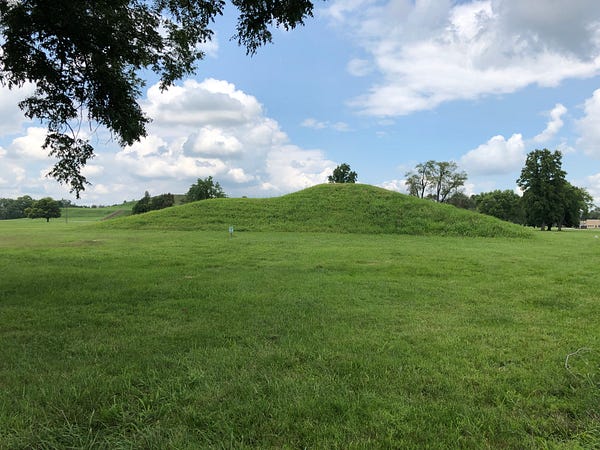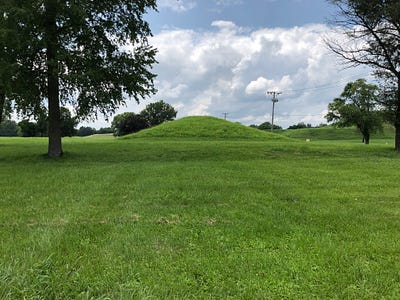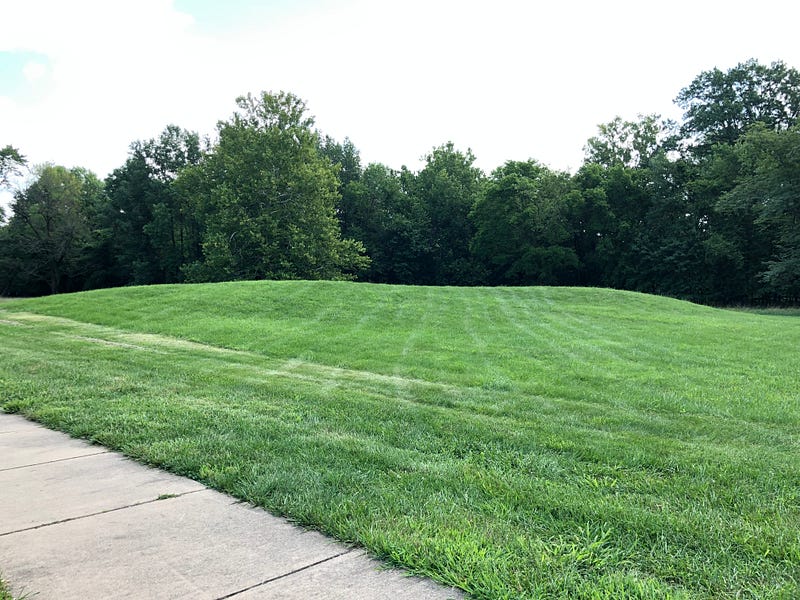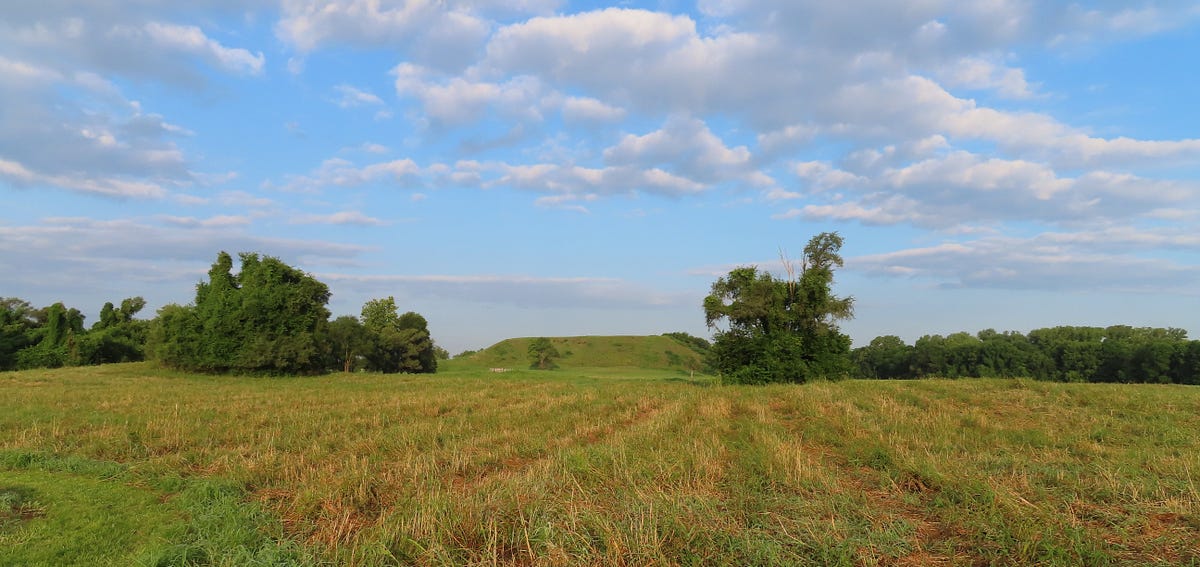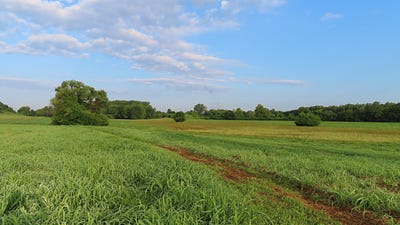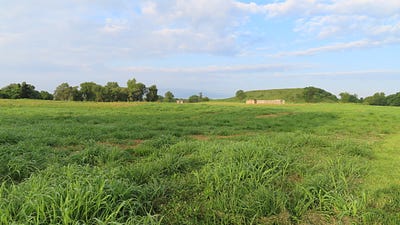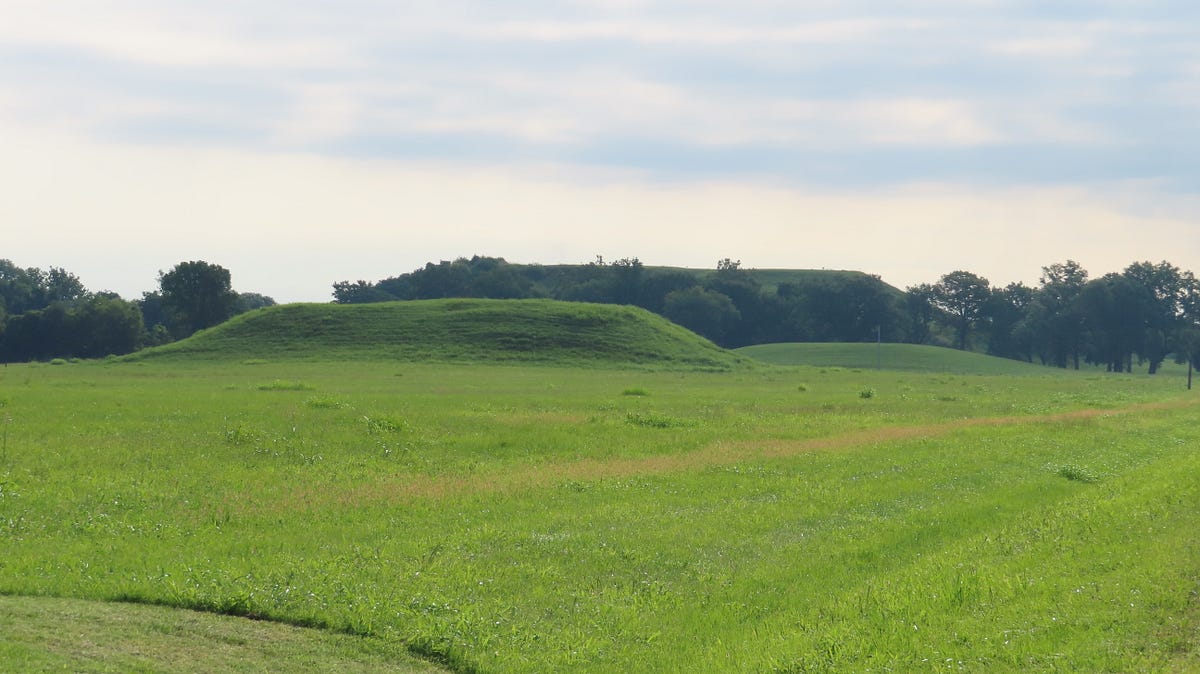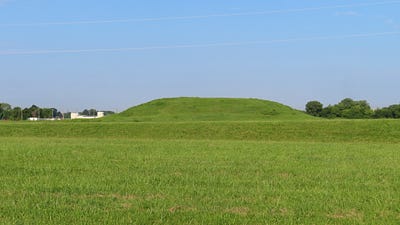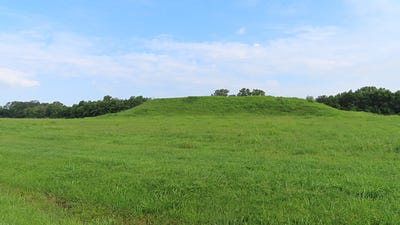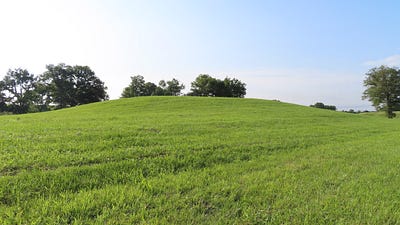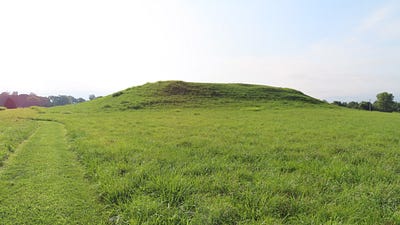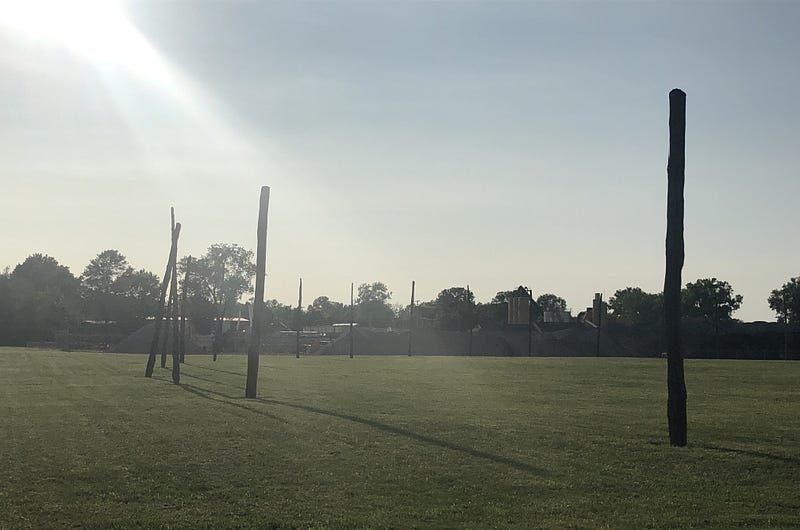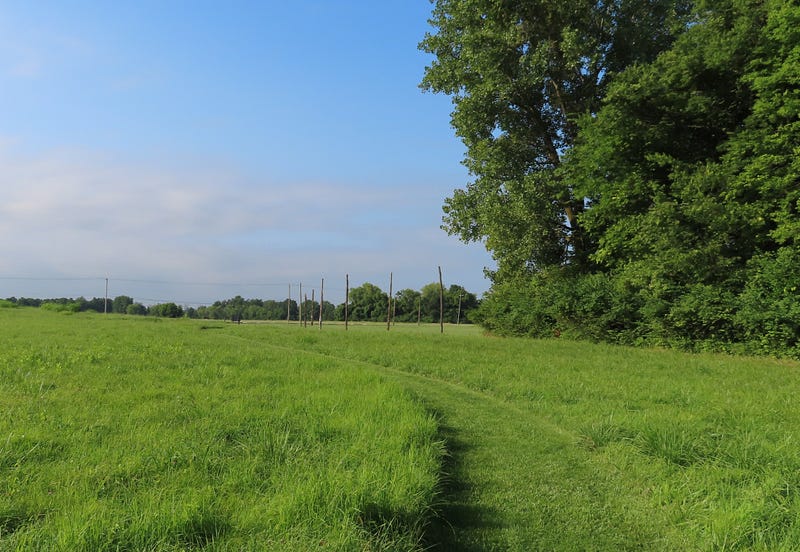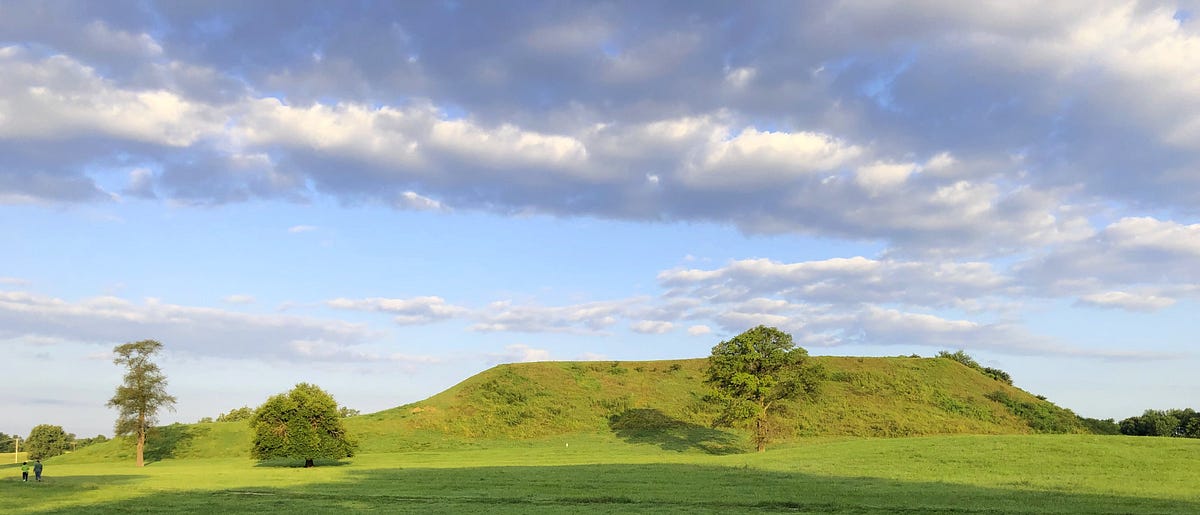“One of the best kept secrets in American history…”
The fifth largest pyramid in the world…
The largest earthwork in North America…
Like Stonehenge and the Pyramids of Giza, this has been designated a World Heritage Site by the UN.
It’s also a National Historic Landmark.
This is the Great Mound at Cahokia, in southwestern Illinois, just across the Mississippi River from St. Louis, Missouri — you can see the city and its arch from the top the mound.
It’s 100 feet high. Covering about 14 acres, its footprint rivals that of the Great Pyramid of Egypt. About 21 million cubic feet of dirt went into its construction, which occurred from about 900 A.D. to around 1250 A.D., built by an urban agrarian culture we call The Mississippians.
Likely home to 20,000 people at its peak, the population of the ancient city of Cahokia rivaled and may have surpassed those of contemporary European cities like London or Paris.
This hierarchical Native American society was more like Egypt under the Pharaohs than the stereotypical portrayals of nomadic wanderers we see in pop culture. Like the Pharaohs, the leader here seems to have been considered semi divine, with powers tied to the sun.
Many Mississippians were temple mound builders, constructing flat-topped mounds on which they placed elite dwellings, workshops, and ritual centers. It’s likely the chief, the leader, would have lived atop the Great Mound. They also built conical burial mounds. We often see flat topped mounds paired with rounded burial mounds at Mississippian sites around the southeast and Midwest.
They built at least 120 mounds at Cahokia. About 70 remain or were reconstructed. Many were plowed down for farmland and destroyed over time. Many mounds were lost as the American frontier pushed West.
French monks briefly occupied the top of the Great Mound in the early 1800s. We can thank them for the name commonly given to the earthen pyramid: Monks Mound.
Monks Mound was surrounded by plazas, each of which, in turn, was surrounded by more mounds.
The Grand Plaza to the South of Monks Mound is the largest at Cahokia, deliberately leveled by the mound builders.
The fence-like structure in front of the side of the great mound is a recreation of a Stockade which ran around the Great Mound and the mounds of the Grand Plaza during its middle to late period.
Cahokia had no significant enemies — there is no evidence of any contemporary threat to the great city. So, this Palisade, this Stockade, was likely built to keep their own people at bay. A narrow gravel path now traces the position of the stockade around the Mounds in the Grand Plaza.
The Twin Mounds — thought to be a mortuary complex — dominate the southern side of the Grand Plaza, just about opposite Monks Mound.
Two mounds are found on the Grand Plaza itself. Four smaller mounds dot the Eastern side. Another large mound is found on the Northwest corner of the Grand Plaza.
South of The Twin Mounds we find the unassuming Mound 72… not quite so peaceful as it seems.
This serene green mound provided evidence of a bloody ritualistic burial process likely involving mass human sacrifice and entire households killed and buried with their elite masters. Extensive archaeological work here has shown this burial mound contains several mass graves, as well as evidence of ritual killing. Elite burials here include a young man and woman laid to rest on a bed of shell beads.
A bit to the West of Mound 72 we find these Smaller Twins. That’s my name for them. Very little information is given on Mounds 67 and 68.
The mounds to the East of Monks Mound seemed to have suffered more agricultural degradation than others on the site.
To the West of Monks Mound, we find more-intact mounds, including The Merrell Mound, Mound 42, one of the largest and best preserved at Cahokia and unique — with an oval platform mound built into its Southwest corner.
Further to the West, past these mounds, they found evidence of several circles of wooden posts. The postholes indicate these were ancient astronomical observatories, which they have nicknamed “Woodhenge”.
The posts lined up with significant risings and settings of the sun, moon, and stars. They’ve recreated one of the circles so we can get an idea of how they used this space.
It didn’t take long to realize they would have been watching the sunrise over Monks Mound from here — a not-so-subtle reminder of the leadership hierarchy for the skywatchers.
Cahokia’s time seemed to have ended around 1400 AD. Though likely the descendants of its builders, by the time Europeans arrived, the Native Americans of the area, Muskhogean speaking Creek, Chickasaw, and Choctaw, shared little recollection of this city of mounds. This could have been deliberate deflection, of course, trying to keep a holy place from desecration by the new interlopers. But they seemed quite detached from this likely work of their ancestors.
I’ve been wanting to visit Cahokia since first reading of Monks Mound years ago. The 5th largest pyramid in the world, right here! Just about smack dab in the middle of the USA — and built by an advanced urban Native American civilization.
It’s incredible, really.
It’s also kind of incredible that this is one of the best kept secrets in American history. Very few people knew what I meant when I told them I was going to Cahokia. Where? What’s that?
Now, you know.


